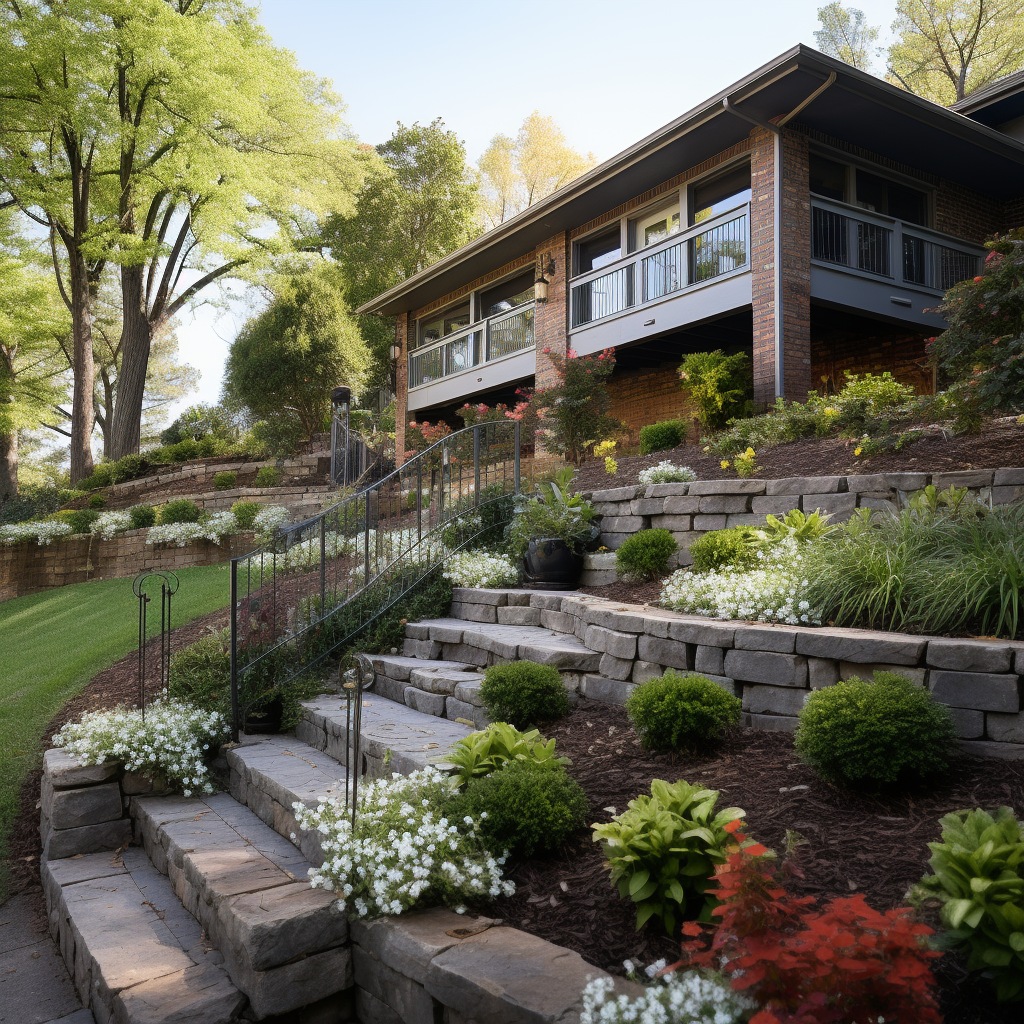The 7-Second Trick For Hilton Head Landscapes
The 7-Second Trick For Hilton Head Landscapes
Blog Article
The smart Trick of Hilton Head Landscapes That Nobody is Talking About
Table of Contents6 Easy Facts About Hilton Head Landscapes DescribedThe Greatest Guide To Hilton Head LandscapesHilton Head Landscapes Fundamentals ExplainedHow Hilton Head Landscapes can Save You Time, Stress, and Money.A Biased View of Hilton Head LandscapesIndicators on Hilton Head Landscapes You Need To KnowThe 9-Minute Rule for Hilton Head Landscapes
Line creates all types and patterns and can be used in a selection of methods in the landscape. Line in the landscape is developed by the side between two materials, the outline or shape of a type, or a long linear feature. Lines are an effective device for the designer because they can be used to create a limitless variety of shapes and types, and they regulate motion of the eye and the body.

Lines in the landscape. The properties of lines determine just how people respond to the landscape, both emotionally and physically.
The Of Hilton Head Landscapes
Straight lines are most typically discovered in hardscape edges and material. Rounded lines create an informal, all-natural, kicked back character that is associated a lot more with nature and asymmetrical equilibrium. Rounded lines relocate the eye at a slower pace and include secret to the area by creating surprise sights. Vertical lines move the eye up, making a room feel larger.
Vertical lines in the landscape include high, slim plant product, such as trees, or high structures, such as an arbor or a bird residence on a post. Horizontal lines relocate the eye along the ground plane and can make a room feel larger. Low lines are much more subdued and develop a feeling of remainder or repose.
About Hilton Head Landscapes
Low lines are developed by reduced garden walls, sidewalks, and short hedges. Lines are utilized to attract forms on a strategy. In plan sight, they define plant beds and hardscape locations. Lines are also produced by the upright types of constructed features and plant product. There are three main line kinds that produce kind in the landscape: bedlines, hardscape lines, and plant lines.
Bedlines connect plant material to your home and hardscape due to the fact that the eye adheres to the line, moving the look via the landscape. Hardscape lines are created by the edge of the hardscape, which defines the developed framework. Line can additionally be created by long and narrow materials, such as a fence or wall surface.
Hilton Head Landscapes Fundamentals Explained
Kind is discovered in both hardscape and plants, and it is typically the dominant aesthetic aspect that spatially organizes the landscape and commonly figures out the style of the garden. The form of frameworks, plant beds, and garden ornaments also determines the total kind style of the garden. Official, geometric kinds consist of circles, squares, and polygons.
Plants produce form in the yard via their lays out or silhouettes, however kind can likewise be defined by a void or adverse room in between plants - landscaping hilton head sc (https://www.provenexpert.com/steven-gonzales/?mode=preview). Circles can be complete circles, or they can be divided right into fifty percent circles or circle segments and incorporated with lines to create arcs and tangents
8 Easy Facts About Hilton Head Landscapes Shown
Circles can likewise be extended into ovals and ellipses for even more selection and rate of interest. Circles are a solid design type due to the fact that the eye is always attracted to the facility, which can be used to emphasize a focal point or link various other forms. Number 2. Round forms in hardscape and yard panels.
The square type can additionally be segmented and previously owned consistently to produce a grid pattern. Unlike circles, squares are more powerful on the brink, which can be lined up or overlapped to develop special patterns and more complex forms. Polygons are many-sided types with straight sides. Triangulars, as an example, are three-sided polygons.
Meandering lines commonly mimic the all-natural course of rivers or streams and can be called smooth lines with deeply curved undulations. Twisting lines (Number 3) function well for paths, plant bedlines, and completely dry stream beds. Twisting lines can add rate of interest and secret to a garden by leading audiences around corners to discover new views and rooms.
Rumored Buzz on Hilton Head Landscapes

Common plant kinds are well established and standard, as kind is the most consistent and recognizable quality of plants. Form can likewise be created with the massing of plants, where the overall mass develops a different type than an individual plant.
A very contrasting kind must be made use of with careone or 2 job well as a prime focus, yet too many wreak havoc. All-natural plant forms, instead of over-trimmed forms, must develop the bulk of the make-up. The relevance of general kind is essentially depending on the seeing Check Out Your URL perspectivethe kind of a tree can show up quite various to an individual standing under the cover versus seeing the tree from a distance in an open area.
More About Hilton Head Landscapes
Plant forms also create and define the void or open spaces between the plants, creating either convex or concave forms in deep spaces. High-arching tree branches commonly develop a concave open room under the branches, and a rounded cover with reduced branches loads the area to develop a convex kind outdoors room under the tree.

Report this page